Fishes
Media
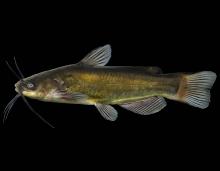
Species Types
Scientific Name
Ameiurus melas
Description
The black bullhead is widespread in Missouri. It is the most common bullhead catfish in north and west portions of the state. It has dusky or black chin barbels, and the edge of its tail fin is notched, not straight.
Media

Species Types
Scientific Name
Esox americanus vermiculatus
Description
The grass pickerel is the most common and widely distributed pike in Missouri. It is also the smallest, seldom exceeding 10 or 12 inches in length.
Media
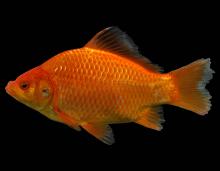
Species Types
Scientific Name
Carassius auratus
Description
Goldfish are not native to North America. They often escape into the wild from bait buckets and other causes, but there are few self-sustaining populations in Missouri.
Media

Species Types
Scientific Name
Cyprinus carpio
Description
The common carp is a "whopper" member of the minnow family. Originally from Asia, it was actively stocked in America in the 1800s and was firmly established in Missouri by 1895.
Media
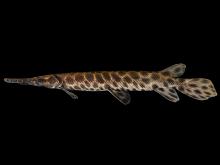
Species Types
Scientific Name
Lepisosteus oculatus
Description
The spotted gar has many well-defined roundish black spots on top of the head and on the paired fins. Like other gars, it's a long, cylindrical fish with a long snout and numerous prominent teeth. The body is covered with hard, diamond-shaped scales.
Media

Species Types
Scientific Name
Amia ocellicauda (formerly Amia calva)
Description
The eyetail bowfin is a stout-bodied, nearly cylindrical fish. It is most abundant in the Mississippi Lowlands, though it occurs along the entire length of the Mississippi River.
Media

Species Types
Scientific Name
Pomoxis annularis
Description
The white crappie, a popular panfish, has silver sides with 5 to 10 often faint vertical bars. The upper jaw reaches past the middle of the eye. It is more abundant and widespread than the black crappie.
Media

Species Types
Scientific Name
Centrarchus macropterus
Description
The flier is found in Missouri's southeastern lowland swamps. It resembles crappie but has 10-13 dorsal spines. It's deep-bodied and saucer-shaped and generally olive-green to brassy in color.
Media
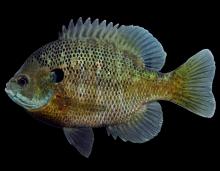
Species Types
Scientific Name
Lepomis macrochirus
Description
The bluegill is one of the most abundant and popular panfishes in North America. This deep-bodied, slab-sided sunfish sports a black “ear flap” extending from the edge of its gill cover.
Media
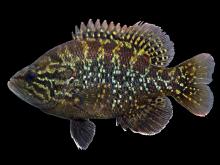
Species Types
Scientific Name
Lepomis gulosus
Description
The warmouth is a thick-bodied, large-mouthed sunfish that occurs widely over the southern and eastern parts of Missouri. Note the 4 or 5 reddish-brown streaks radiating from the red eye across the side of the head.
See Also


Media

Species Types
Scientific Name
Amphiuma tridactylum
Description
The three-toed amphiuma is an eel-like, completely aquatic salamander. It has very small forelimbs and hind limbs, each with three tiny toes. In Missouri it’s found only in the Bootheel region.
Media

Species Types
Scientific Name
Siren intermedia nettingi
Description
The western lesser siren is an eel-like, aquatic salamander with external gills, small eyes, small forelimbs with four toes, and no hind limbs. In Missouri, it’s found mostly in the Bootheel and northward in counties near the Mississippi River.
About Fishes in Missouri
Missouri has more than 200 kinds of fish, more than are found in most neighboring states. Fishes live in water, breathe with gills, and have fins instead of legs. Most are covered with scales. Most fish in Missouri “look” like fish and could never be confused with anything else. True, lampreys and eels have snakelike bodies — but they also have fins and smooth, slimy skin, which snakes do not.





















